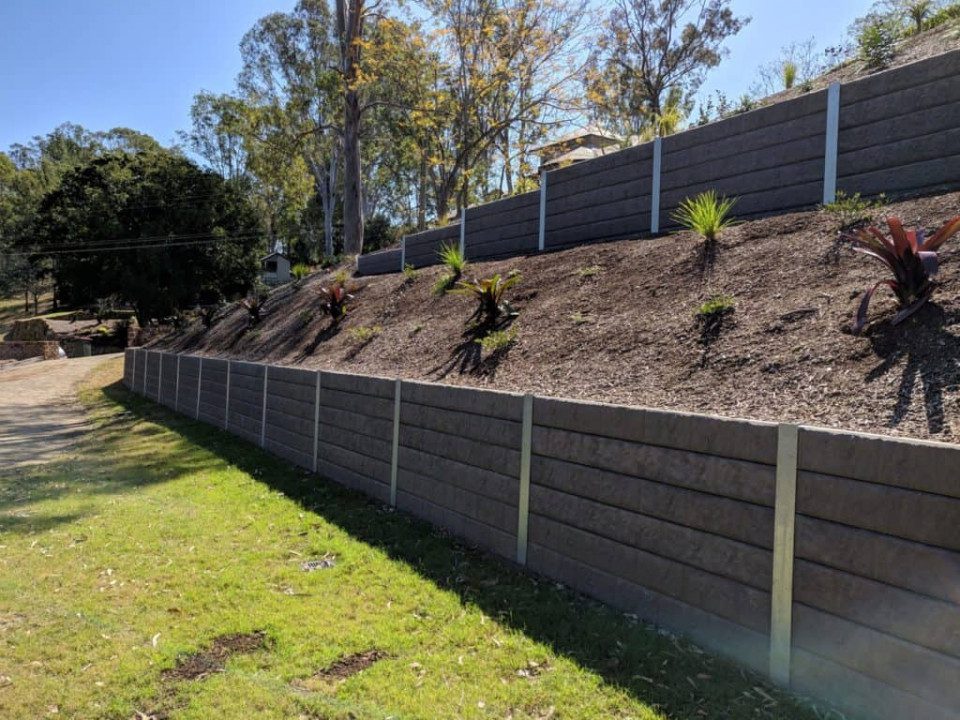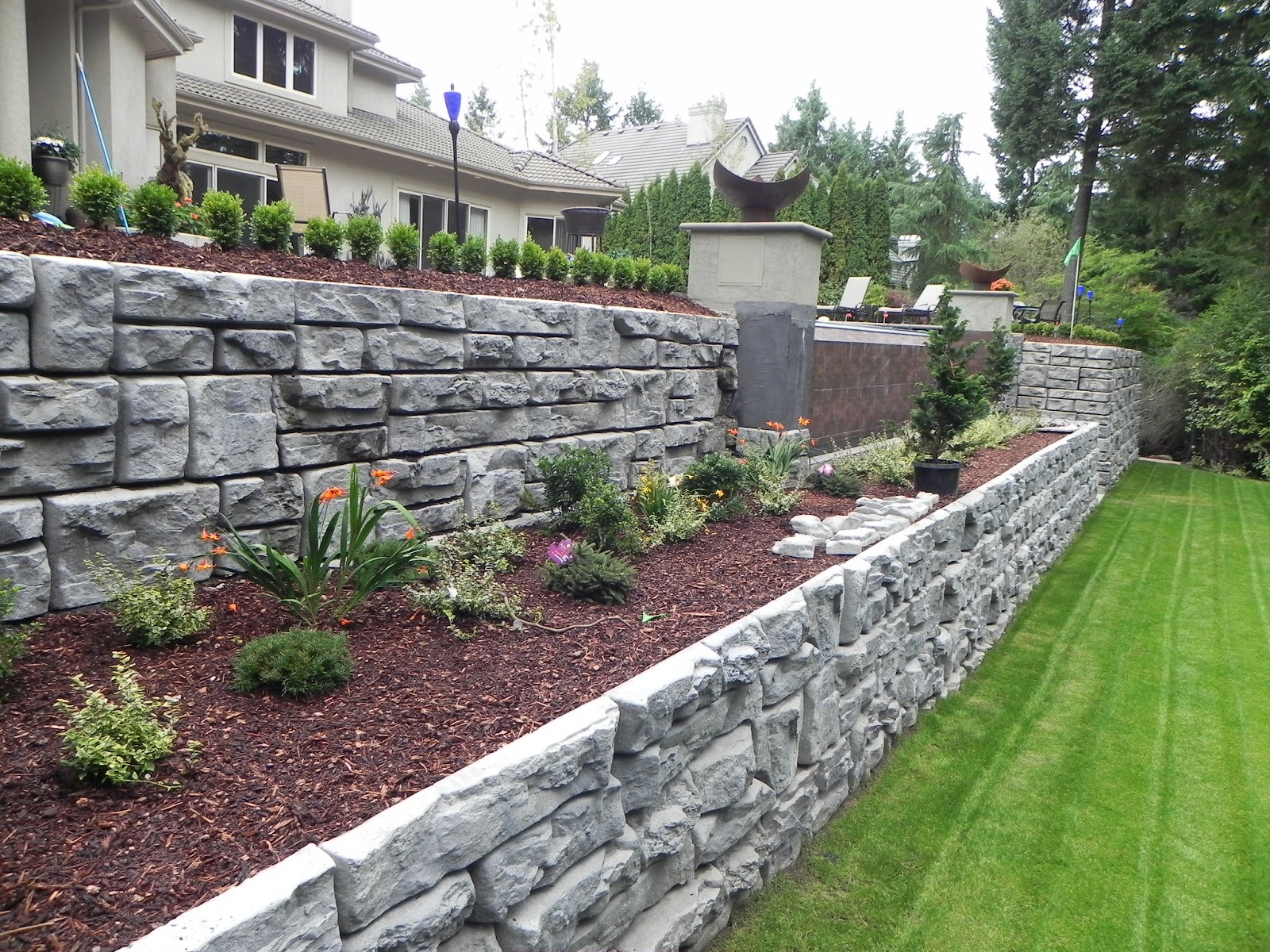Change Your Outdoor Room with Stunning Retaining Walls Sunshine Coast
Change Your Outdoor Room with Stunning Retaining Walls Sunshine Coast
Blog Article
Making Certain Structural Integrity: The Significance of Appropriately Created Retaining Walls in Preventing Incline Failure
In the realm of civil design and building, the significance of effectively built keeping wall surfaces in avoiding slope failing can not be downplayed. By exploring the detailed interplay in between these components, a deeper comprehension of the crucial duty that keeping walls play in maintaining architectural stability and protecting against incline failure arises.
Role of Retaining Walls in Security
The indispensability of maintaining wall surfaces in ensuring slope security is critical in civil engineering techniques. Keeping walls offer an essential role in avoiding soil erosion, managing water runoff, and keeping the structural integrity of slopes. By sustaining upright or near-vertical quality modifications, preserving walls assist to redistribute lateral stress exerted by the dirt, consequently reducing the risk of slope failure.
One key function of keeping wall surfaces is to neutralize the force of gravity acting upon the dirt mass behind them. This is attained with proper layout and construction, which thinks about variables such as soil kind, wall surface height, water drainage provisions, and prospective surcharge lots. By efficiently preserving soil within specified boundaries, these frameworks help to support slopes and prevent landslides.
Additionally, keeping wall surfaces contribute to the visual appeals of landscapes while providing functional advantages. They can produce terraced degrees for landscape design, assistance highways or frameworks on hills, and enhance the overall functionality of sloped surface. Essentially, retaining walls play a crucial duty in preserving slope security and making certain the security and long life of civil design tasks.
Elements Influencing Wall Performance
Aspects that influence the performance of preserving walls consist of soil residential properties, wall layout, and outside lots. Soil residential or commercial properties play an essential duty in determining the stability and efficiency of a retaining wall. Factors such as soil type, cohesion, interior friction angle, and groundwater problems can influence just how well a wall surface preserves the soil behind it. The design of the keeping wall is one more key variable that influences its efficiency. Appropriate wall surface style thinks about factors like wall height, wall surface type (e.g., gravity wall surfaces, cantilever walls), reinforcement materials, water drainage systems, and building strategies to ensure the wall can stand up to the lateral pressure applied by the kept soil. In addition, outside lots, such as surcharge loads from nearby structures or traffic, seismic pressures, and water stress, should be carefully evaluated throughout the design and building stages to make certain the wall surface can properly resist these outside pressures. By thinking about these factors adequately, designers can create keeping wall surfaces that efficiently protect against incline failing and ensure long-lasting structural honesty.
Layout Factors To Consider for Retaining Wall Surfaces
Including the essential aspects of soil homes and exterior lots right into the structural style procedure is important for developing efficient preserving wall surfaces that make sure slope stability. When designing retaining wall surfaces, designers should thoroughly evaluate the characteristics of the surrounding dirt, including its water drainage, kind, and compaction residential or commercial properties. Comprehending these soil properties is crucial for identifying the ideal wall density, height, and support needed to stand up to the side pressure exerted by the soil mass.
In addition, exterior lots such as surcharge loads from close-by structures or web traffic, as well as seismic pressures, have to be thought about during the style phase. These lots can substantially affect the stability and efficiency of a keeping wall, necessitating using appropriate layout strategies and products to minimize potential failing imp source risks.
In addition, the selection of appropriate materials, such as concrete, rock, or lumber, should straighten with the visual needs and site-specific conditions. Variable of safety factors to consider, drainage stipulations, and construction strategies are additionally vital facets that affect the total style and functionality of maintaining walls in stopping slope failure. By carefully considering these layout factors to consider, designers can guarantee the architectural integrity and lasting security of preserving wall surfaces.

Building And Construction Best Practices for Toughness
When constructing keeping wall surfaces for optimal resilience and durability, adherence to industry-standard techniques and careful attention to information are critical. To make certain the longevity of a preserving wall, correct site prep work is essential.
Including reinforcement strategies, such as geogrids or steel bars, can enhance the structural honesty of the keeping wall and protect against possible failings. By complying with these building and construction finest practices, preserving wall surfaces can stand up to the test of time and properly prevent incline failure.
Importance of Correct Upkeep
Regular maintenance is necessary for preserving the structural stability and capability of maintaining wall surfaces over time. To make sure that keeping walls proceed to execute their intended feature successfully, normal inspections should be performed to identify any type of signs of wear and tear.

Final Thought
To conclude, retaining wall surfaces play an essential function in making sure structural stability and avoiding slope failing. By thinking about factors influencing wall effectiveness, adhering to design considerations, complying with building best techniques, and applying appropriate maintenance, the durability of retaining wall surfaces can be optimized. Retaining Walls Sunshine Coast. It is vital to acknowledge the value of effectively built retaining walls in keeping stability and stopping possible threats connected with slope failure
Elements that influence the efficiency of keeping walls include soil homes, wall surface layout, and external loads. Proper wall surface layout takes into consideration variables like wall height, wall surface type (e.g., gravity wall surfaces, cantilever wall surfaces), reinforcement products, drain systems, and building and construction methods to guarantee the wall can endure the side stress exerted by the click to find out more maintained soil. By thinking about these aspects thoroughly, engineers can construct preserving walls that efficiently protect against slope failure and guarantee long-lasting structural honesty.
Upkeep jobs may include getting rid of drainage systems to prevent water build-up behind the wall surface, fixing any kind of noticeable splits or damages, and ensuring that the wall is totally free from greenery that could exert stress on the framework. By taking into consideration variables influencing wall effectiveness, adhering to make considerations, following construction finest methods, and carrying out correct upkeep, the toughness of maintaining walls can be optimized.
Report this page